A MODERN TOWN
From the events of the Royal Free Town of Podgórze 1784–1915
The limestone hill of Krzemionki in Podgórze represented a great source of minerals. First of all, flint was obtained which served in the production of tools, later limestone used in building and the chemical industry was valued, then marl for the production of cement, clay used for making bricks and then sand. In the middle ages, exploitation of the northern side of the hill began, with two quarries being established – “Twardowski's School” and “Under Benedict”. For the needs of Kraków's buildings, the so-called crushed stone, representing the foundations of the defensive walls and architectural details, was obtained. The 19th century brought a development of techniques and modern branches of industry, and also allowed the natural wealth of Krzemionki to be taken full advantage of. Entrepreneurs, encouraged by tax relief, arrived from all over the whole Austrian empire in order to set up new companies in Podgórze. Numerous representatives of Kraków's families moved their capital and experience to the south bank of the Vistula, contributing to a large extent to the economic development of the new town. Podgórze, besides its wealth of natural resources, also had a supply of people, its proximity to trade routes and the Vistula, which represented a communication artery. The construction of modern bridges as well as railway lines improved and significantly accelerated the transport of goods.
Besides private factories, there were also municipal enterprises. On the north-eastern slope of Łysa Góra, by the current Wielicka Street, a quarry and municipal lime kiln were established. Income from rent reinforced the public budget. A side track to the lime kiln was introduced, connecting it with the Podgórze-Miasto train station.

View of industrial Podgórze
(ANK, ref. no. A-IV-467)
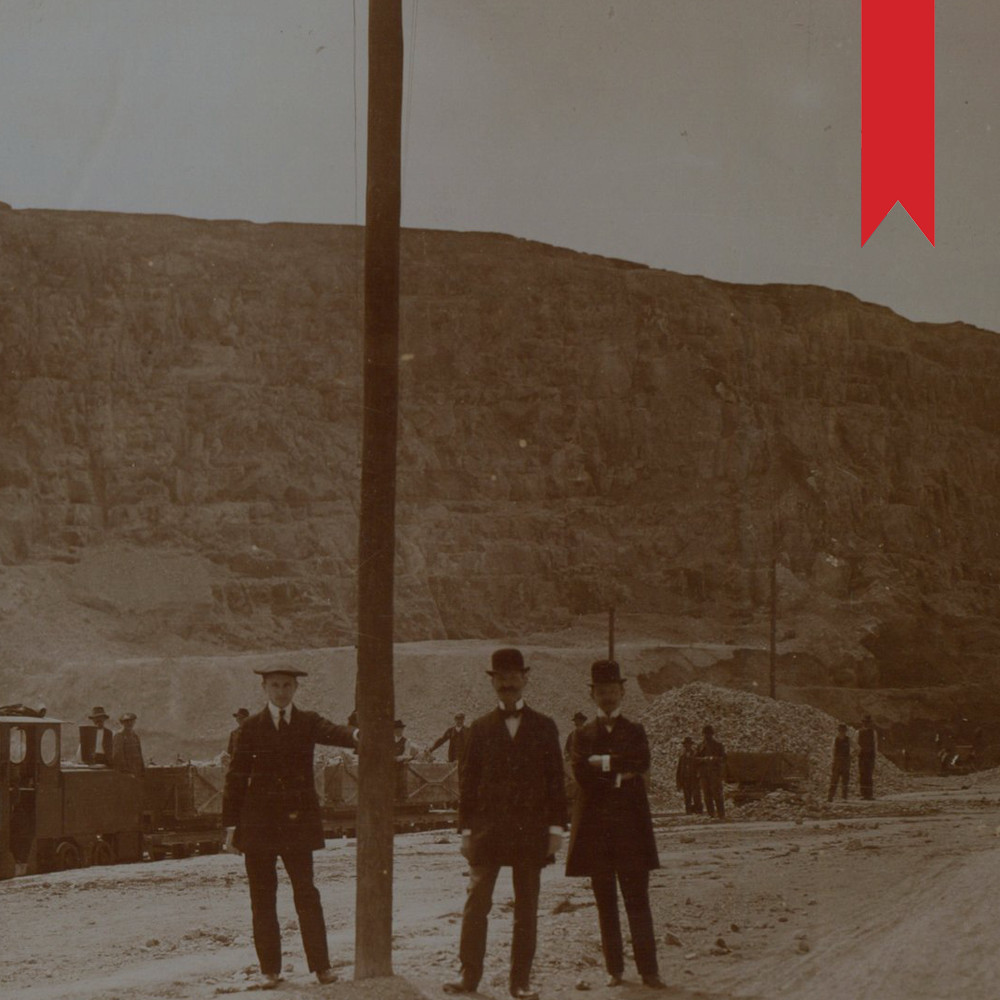
Interior of the quarry
(ANK, ref. no. A-IV-490)
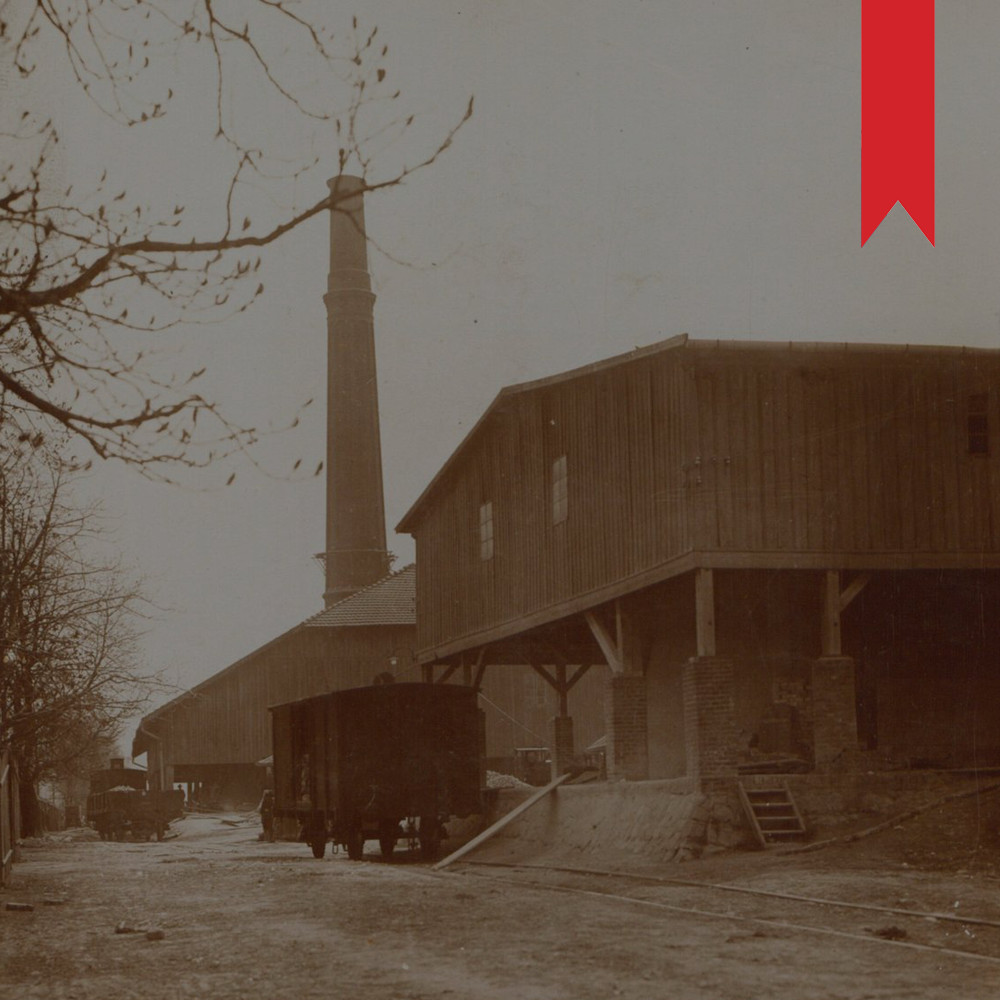
Construction of the municipal lime kiln
(ANK, ref. no. A-IV-489)

Headpiece of the Municipal Lime Kiln and Quarry Board in Podgórze
(ANK, ref. no. 29/690/44, p. 213)
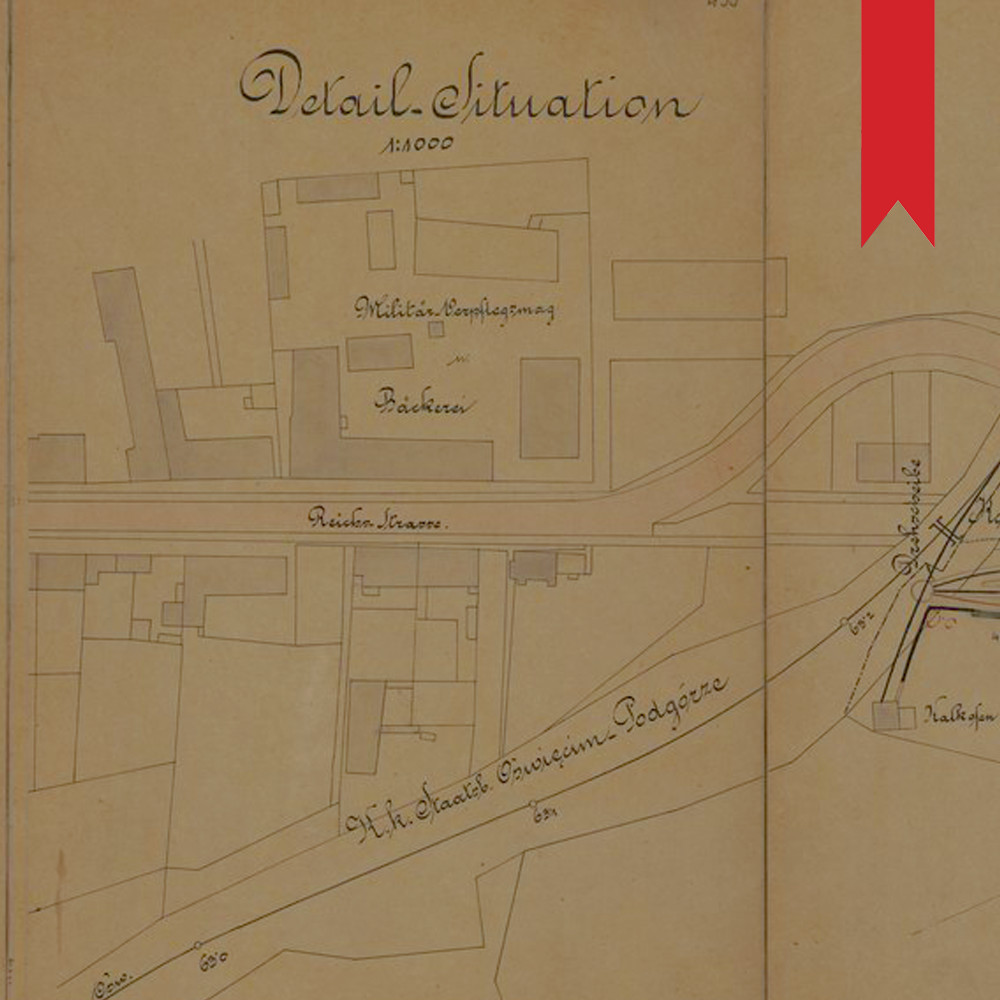
Design of the track to the municipal lime kiln
(ANK, ref. no. 29/53/964, pp. 435-439)
Among the industrialists in Podgórze, two families were particularly active – the Baruchs and Libans. The first family owned the mill and steam bakery in Podgórze as well as the steam brickworks in Łagiewniki, which opened in 1860. Maurycy Baruch was responsible for introducing a new invention to Podgórze – steam engines. His work was successfully continued by Emil and Gustaw Baruch.
Bernard Liban, a visionary and inventor, grew into a real industrial magnate. In the quarry at the foot of Krakus Mound, he established a lime kiln in 1873, operating under the name of “Liban & Ehrenpreis”. In order to obtain raw materials and burn lime he used the latest technology, among others, ring kilns and Rumford kilns. In 1894, the quarry was connected with railway tracks from the Podgórze-Bonarka station, easing the transport of materials. The rapidly developing firm survived the turmoil of war, continuing production under the name of “Kraków Lime Kiln and Quarry”. During the Second World War, the site was acquired by the Nazis and changed into a work camp.
In 1884 in the area of Bonarka, Bernard Liban opened a cement plant. In the Liban Portland Cement Factory, marl obtained from the nearby quarry was used for production. Initially, the plant had one steam boiler and was able to produce one hundred wagons of cement yearly. Thanks to suitable investment, such as the construction of its own electricity generating plant or rotating shaft furnace (a patented invention of Bernard Liban), its efficiency increased sixty times. In the 1920s, the factory employed half a thousand employees. The cement plant lasted until 1937, when it was taken over by the Kraków “Solvay” Plant.
For two more investments, Bernard Liban chose Borek Fałęcki. Together with Władysław Liban, he opened in 1906 the “Liban” Chemical Product Factory, producing artificial fertilizer, as well as the First Galician Factory of Sodium Ammonia, taken over in 1909 by the Solvay company and renamed the Austrian Solvay Plants – Sodium Factory in Podgórze.

Buildings belonging to the “Maurycy Baruch Steam Mill” plant
(ANK, ref. no. A-IV-672)

Design of the wooden granary of Moritz Baruch from the initial period of its activity
(ANK, ref. no. 29/53/38, p. 242)
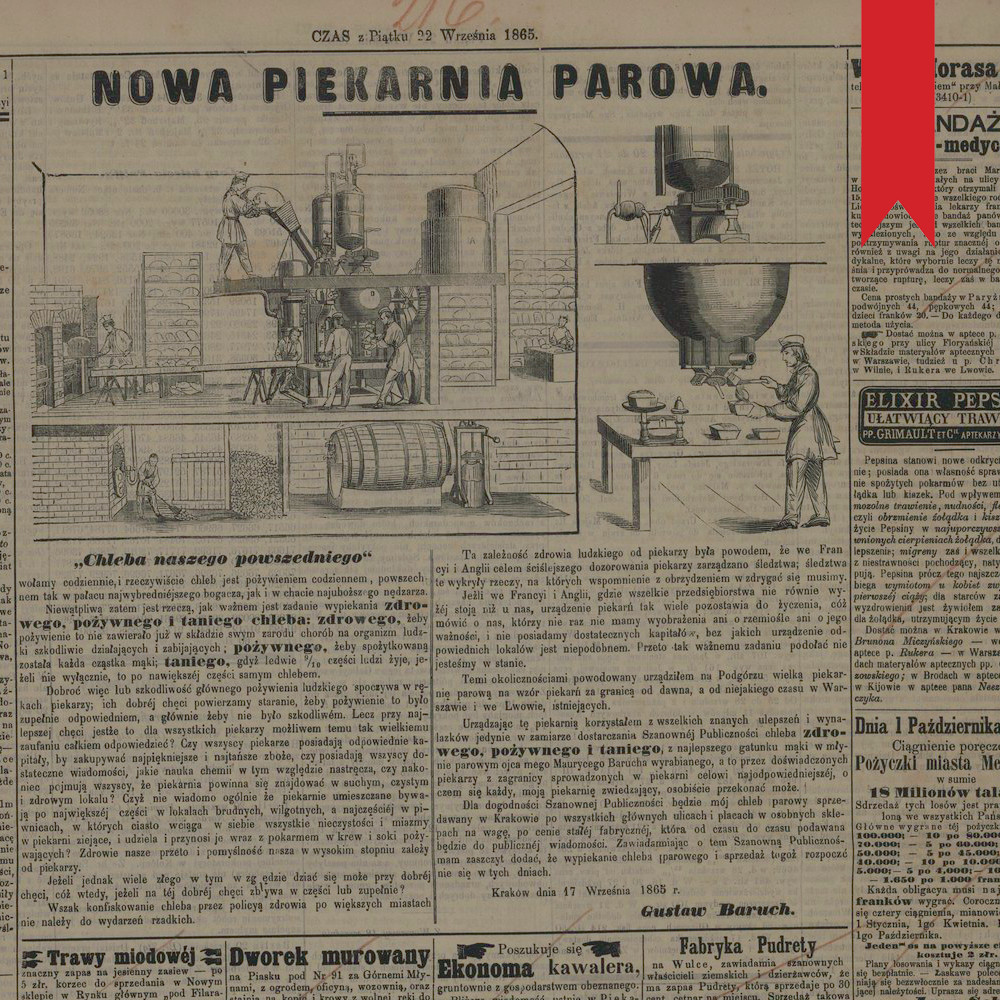
Article of Gustaw Baruch from 22 September 1865 in “Czas”
(ANK, ref. no. Pr 2, v. 1865, part. II, p, 216)
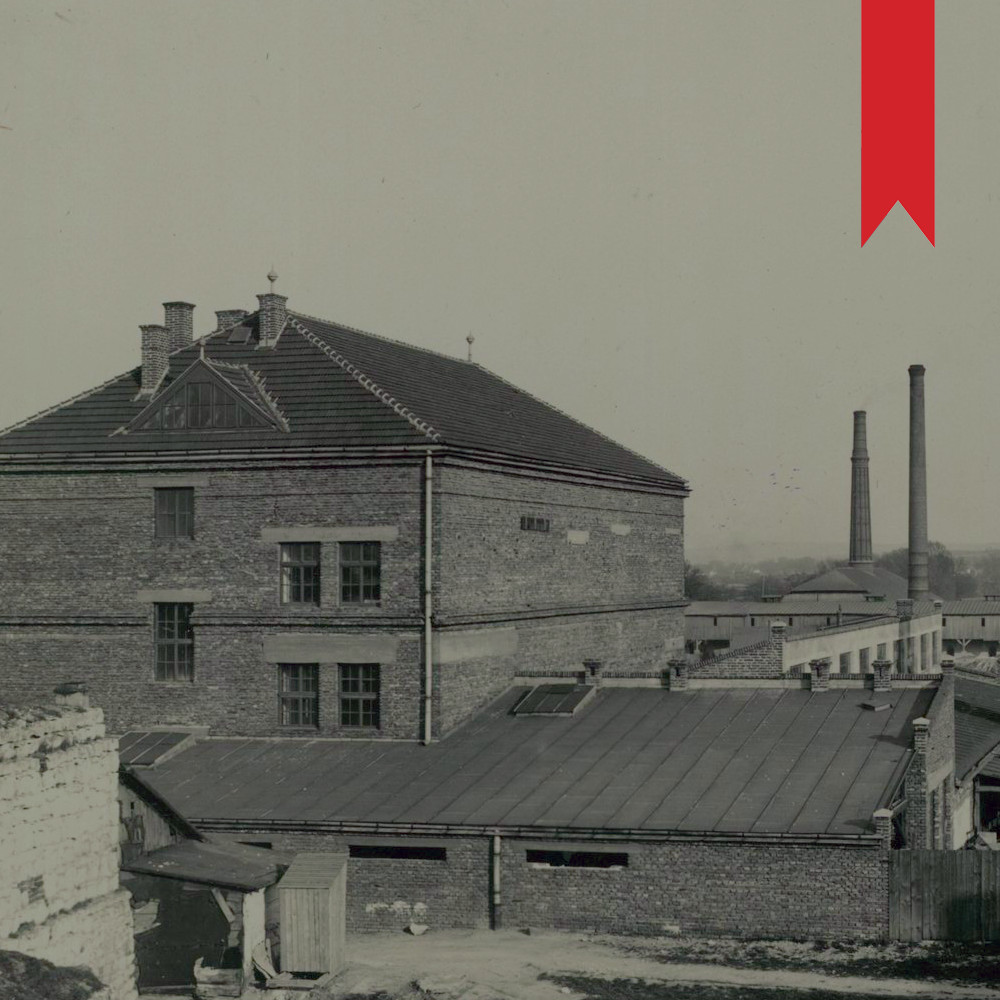
Steam bakery of the Baruch family
(ANK, ref. no. A-IV-413)

Bill with a decorative headpiece of the Liban and Ehrenpreis Lime Kiln and Quarry company in Podgórze
(ANK, ref. no. 29/690/44, p. 121)

Bill with a decorative headpiece of the Liban and Ehrenpreis Quarry in Podgórze and the First National Lime Factory
(ANK, ref. no. 29/690/44, p. 119)

Bill with a decorative headpiece of the Bernard Liban Portland Cement Factory
(ANK, ref. no. 29/690/44, p. 97)
The area of the south bank of the Vistula attracted representatives of various branches of industry. Jakub and Herman Kamsler in 1889 set up the first in Galicia Kamsler Brothers Factory in Podgórze near Kraków. The enterprise, located at 7 Dąbrowskiego Street (currently Powstańców Wielkopolskich), produced iron moulds for the building and machine industries. Light industry was represented by the Kraków Soap Factory of C. Śmiechowski, established in 1913 in Zabłocie. It manufactured shaving cream, soap, glycerine and stearin candles. After the Second World War, the factory merged with the Miraculum Medical-Cosmetic company.
The attractive location of Podgórze as well as the large amount of unused urban areas, which enabled the extension of the production areas and development of factories, encouraged entrepreneurs from Kraków and the neighbouring boroughs to move their factories to the south bank of the Vistula.
In 1896, Michał Dobrowolski, owner of the Factory of Cotton Wool and Dressings opened in 1886 in Nowa Wies, moved production to Kalwaryjska Street, and then to Parkowa Street. The factory supplied all of Galicia with pharmaceutical goods, such as bandages, plasters, lozenges and herbal extracts. In addition, it produced cosmetics: eau de cologne, perfumes, lip sticks, face powder and hair care products.The decision to relocate was also taken by Joseph Gorecki, owner of the Joseph Gorecki Factory of Latticework, Furniture, Iron Constructions and Ornamental Products, established in 1890. Initially based in Kazimierz, at 26 Wawrzyńca Street, the company moved in 1912 to Zabłocie and a building at 5 Romanowicza Street. Gorecki's products were widely known and valued. The factory produced, among others, the iron cross that decorates the top of Mount Giewont.
At the end of the 19th century there was a rapid development of the food industry in Podgórze, especially the confectionery industry. Thanks to the railway, which ensured the fast transport of ingredients necessary for production, it was possible to import cocoa or vanilla, among others. One of the oldest confectionery companies, the “Kryształ” Steam Factory of Warsaw Sweets and Chocolates was established in 1914 at 30 Lwowska Street. At its peak, it produced 600 tonnes of sweets and 200 tonnes of chocolate annually and employed 100 workers. It had its own shops in Kraków, Tarnow and Silesia. In 1921, at 7 Krakusa Street, Optima opened and manufactured chocolate, biscuits, cakes and wafers, and in 1929 the Joseph Pischinger Factory of Chocolate Goods moved from Dębniki. This last factory produced 240 tonnes of confectionery in its first year. In the 1930s, it employed over three hundred workers and belonged to the largest employers in Kraków.
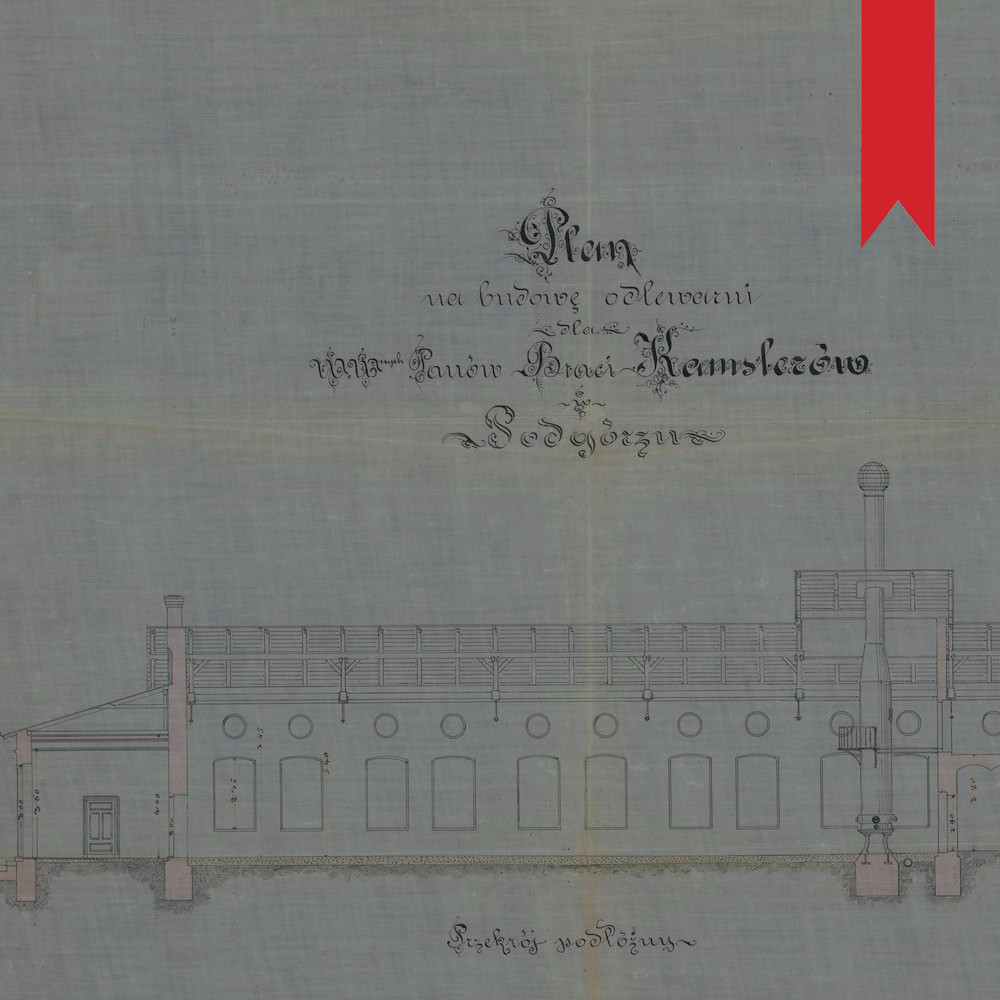
Design of the Kamsler Brothers Factory in Podgórze
(ANK, ref. no. Kr 8196, p. 15)

Headpiece of the Podgórski Kamsler Brothers Iron and Metal Foundry
(ANK, ref. no. Kr 8196, p. 227)

Headpiece of the C. Śmiechowski Kraków Soap Factory
(ANK, ref. no. 29/690/44, p. 1639)

Headpiece of the M. L. Dobrowolski Factory of Surgical Dressings
(ANK, ref. no. 29/690/44, p. 57)
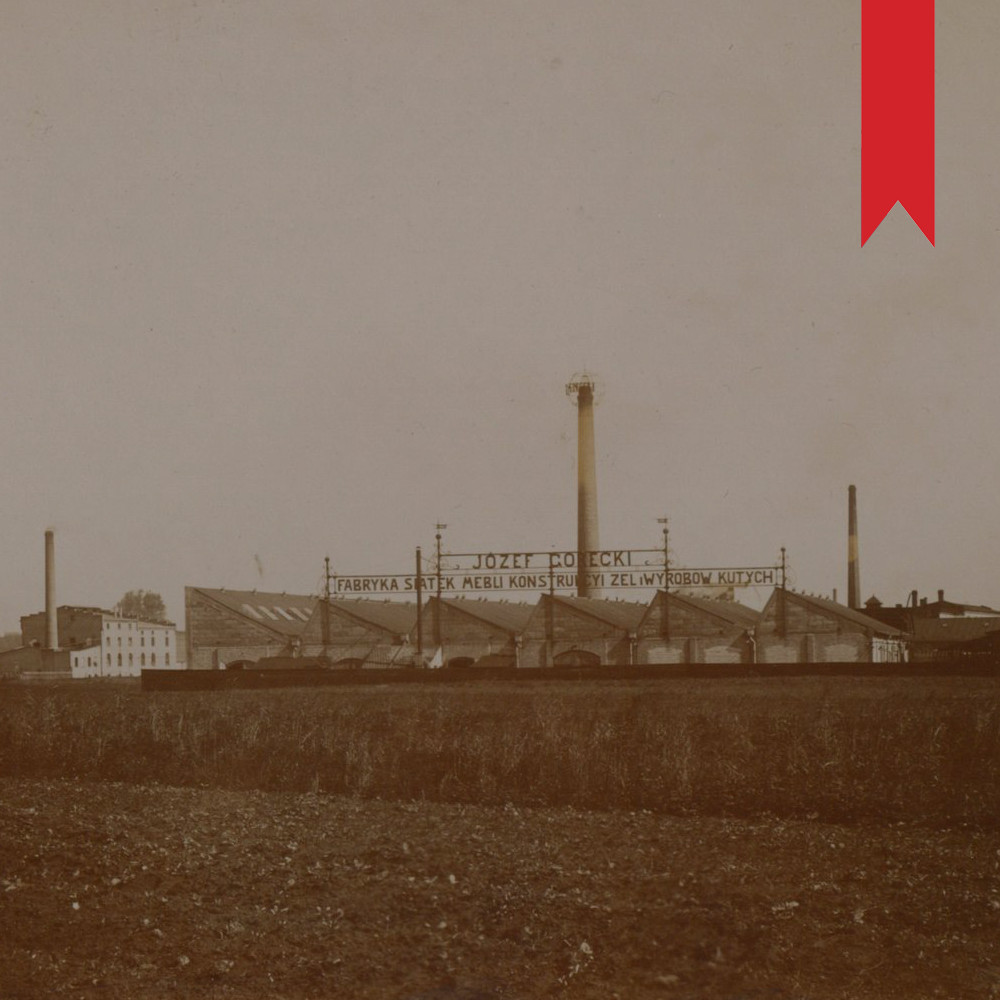
Joseph Gorecki Factory of Latticework, Furniture, Iron Constructions and Ornamental Products, Podgórze-Kraków
(ANK, ref. no. A-IV-669)
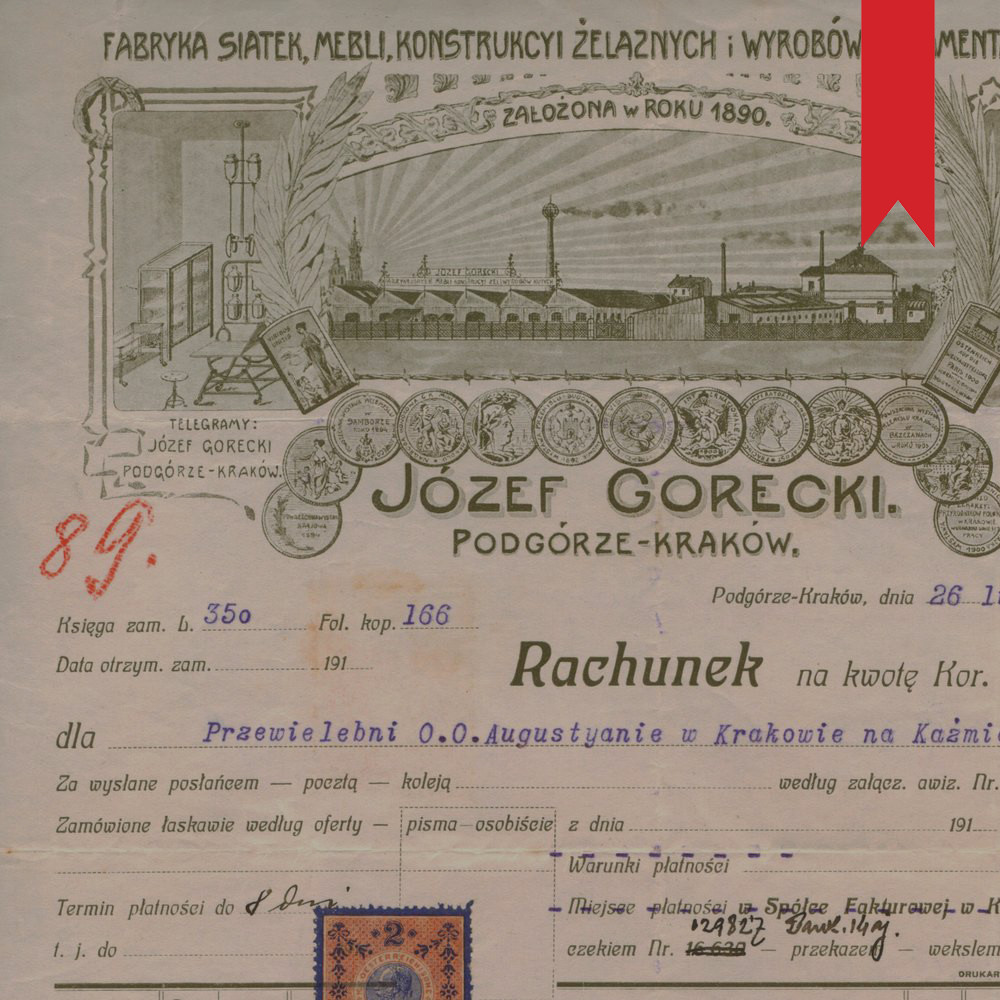
Headpiece of the Joseph Gorecki Factory of Latticework, Furniture, Iron Constructions and Ornamental Products, Podgórze-Kraków
(ANK, ref. no. 29/690/44, p. 73)

Building design for the Optima factory, 1921
(ANK, ref. no. ABM ul. Krakusa 7, f 442, pl 5)

Headpiece of the J. Pischinger Factory of Chocolate Goods
(ANK, ref. no. Kr 8200, p. 409)
